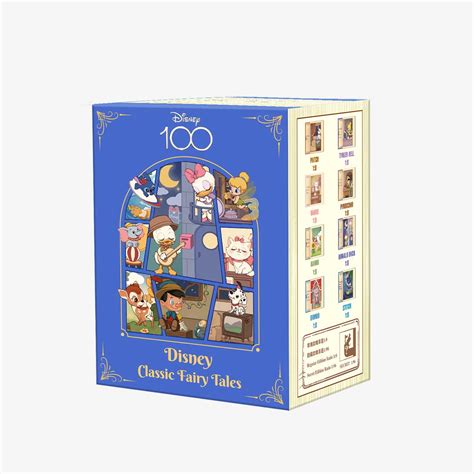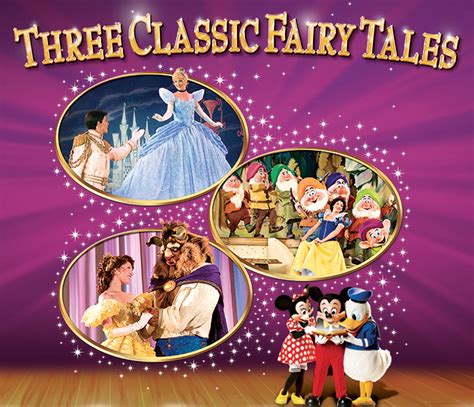Disney's classic fairy tales have been a cornerstone of childhood imagination and entertainment for generations. The magical worlds, memorable characters, and timeless stories have captivated audiences worldwide, making Disney a household name. From the beloved princesses to the iconic villains, Disney's fairy tales have become an integral part of our shared cultural heritage. With a legacy spanning over nine decades, Disney's commitment to storytelling has remained unwavering, continuing to inspire and enchant new generations of fans.
The concept of fairy tales has its roots in traditional folklore, with stories passed down through oral traditions and eventually finding their way into written form. The Brothers Grimm, Charles Perrault, and Hans Christian Andersen are among the most notable collectors and authors of fairy tales, whose works have had a profound influence on the genre. Disney's adaptation of these classic tales marked a significant turning point in the evolution of fairy tales, as they brought these stories to life through innovative animation, memorable music, and endearing characters. The success of Disney's fairy tales can be attributed to their ability to balance nostalgia with innovation, ensuring that the stories remain relevant and captivating for audiences of all ages.
Key Points
- Disney's classic fairy tales have been a cornerstone of childhood imagination and entertainment for generations.
- The magical worlds, memorable characters, and timeless stories have captivated audiences worldwide, making Disney a household name.
- Disney's adaptation of traditional fairy tales marked a significant turning point in the evolution of the genre, bringing these stories to life through innovative animation, memorable music, and endearing characters.
- The success of Disney's fairy tales can be attributed to their ability to balance nostalgia with innovation, ensuring that the stories remain relevant and captivating for audiences of all ages.
- Disney's commitment to storytelling has remained unwavering, continuing to inspire and enchant new generations of fans through their classic fairy tales and modern adaptations.
The Evolution of Disney’s Fairy Tales

Disney’s journey into the world of fairy tales began with the release of Snow White and the Seven Dwarfs in 1937, the first full-length animated feature film. This groundbreaking movie set the stage for future adaptations, including Pinocchio (1940), Fantasia (1940), and Bambi (1942). The 1950s saw the release of Cinderella (1950), Alice in Wonderland (1951), and Peter Pan (1953), cementing Disney’s position as a leader in the animation industry. The subsequent decades introduced beloved classics such as Sleeping Beauty (1959), 101 Dalmatians (1961), and The Jungle Book (1967), further solidifying Disney’s reputation as a master storyteller.
The 1980s and 1990s witnessed a resurgence in Disney's fairy tale productions, with the release of The Little Mermaid (1989), Beauty and the Beast (1991), Aladdin (1992), and The Lion King (1994). These films not only revitalized the genre but also expanded Disney's reach, appealing to a broader audience and cementing the company's status as a global entertainment powerhouse. The modern era has seen the release of Tangled (2010), Frozen (2013), and Moana (2016), which have continued to push the boundaries of storytelling, incorporating innovative animation techniques, memorable characters, and catchy music.
Technical Specifications and Innovations
Disney’s fairy tales have consistently pushed the boundaries of animation and storytelling, incorporating cutting-edge techniques and innovative technologies. The introduction of Multiplane Camera in Snow White and the Seven Dwarfs (1937) allowed for greater depth and dimensionality in animation, while the development of Xerox technology in 101 Dalmatians (1961) enabled the mass production of animation cels. The advent of computer-generated imagery (CGI) in the 1990s revolutionized the animation industry, enabling the creation of complex, detailed environments and characters.
| Movie Title | Release Year | Technical Innovation |
|---|---|---|
| Snow White and the Seven Dwarfs | 1937 | Multiplane Camera |
| 101 Dalmatians | 1961 | Xerox technology |
| The Little Mermaid | 1989 | Computer-generated imagery (CGI) |
| Beauty and the Beast | 1991 | Digital animation and special effects |
| Frozen | 2013 | Advanced CGI and animation techniques |

Disney’s Impact on Popular Culture

Disney’s fairy tales have had a profound impact on popular culture, with references to these stories appearing in various forms of media, from film and television to music and literature. The iconic characters, memorable quotes, and timeless themes have become an integral part of our shared cultural heritage, influencing generations of artists, writers, and musicians. The Disney Princess franchise, for example, has become a cultural phenomenon, with merchandise, theme park attractions, and live shows dedicated to the beloved characters.
The influence of Disney's fairy tales can also be seen in the work of other artists and creators, who have drawn inspiration from these stories to create their own unique works. The Broadway musicals, such as The Lion King and Beauty and the Beast, have become hugely successful, introducing the stories to new audiences and cementing their place in the cultural zeitgeist. The Disney brand has become synonymous with quality entertainment, with the company's fairy tales continuing to inspire and enchant audiences worldwide.
Modern Adaptations and Reinterpretations
In recent years, Disney has revisited its classic fairy tales, reimagining them for modern audiences. The live-action remakes of Cinderella (2015), The Jungle Book (2016), and Beauty and the Beast (2017) have been hugely successful, introducing the stories to a new generation of fans. The Disney+ streaming platform has also provided a new outlet for the company’s fairy tales, with exclusive content, such as the live-action remake of Aladdin (2019) and the animated series, Tangled: The Series (2017-2020).
The modern era has also seen a shift towards more diverse and inclusive storytelling, with Disney incorporating diverse characters, cultures, and perspectives into its fairy tales. The success of Moana (2016) and Raya and the Last Dragon (2021) has demonstrated the company's commitment to representing underrepresented communities and promoting diversity and inclusion in its storytelling.
What is the significance of Disney's fairy tales in modern popular culture?
+Disney's fairy tales have had a profound impact on popular culture, with references to these stories appearing in various forms of media, from film and television to music and literature. The iconic characters, memorable quotes, and timeless themes have become an integral part of our shared cultural heritage, influencing generations of artists, writers, and musicians.
How have Disney's fairy tales evolved over the years?
+Disney's fairy tales have consistently pushed the boundaries of animation and storytelling, incorporating cutting-edge techniques and innovative technologies. The introduction of Multiplane Camera, Xerox technology, and computer-generated imagery (CGI) has enabled the creation of complex, detailed environments and characters. The modern era has also seen a shift towards more diverse and inclusive storytelling, with Disney incorporating diverse characters, cultures, and perspectives into its fairy tales.
What is the appeal of Disney's fairy tales to audiences of all ages?
+Disney's fairy tales have a timeless appeal, with their magical worlds, memorable characters, and timeless themes captivating audiences of all ages. The stories are often universal, dealing with themes such as love, friendship, and self-discovery, which are relevant to people of all ages. The innovative animation, memorable music, and endearing characters also contribute to the enduring appeal of Disney's fairy tales.
In conclusion, Disney’s classic fairy tales have become an integral part of our shared cultural heritage, captivating audiences worldwide with their magical worlds, memorable characters, and timeless stories. The company’s commitment to innovation and storytelling has enabled it to maintain its position as a leader in the animation industry, consistently pushing the boundaries of what is possible in the world of fairy tales. As Disney continues to evolve and adapt to changing times, its fairy tales remain a testament to the power of storytelling, inspiring and enchanting new generations of fans.
